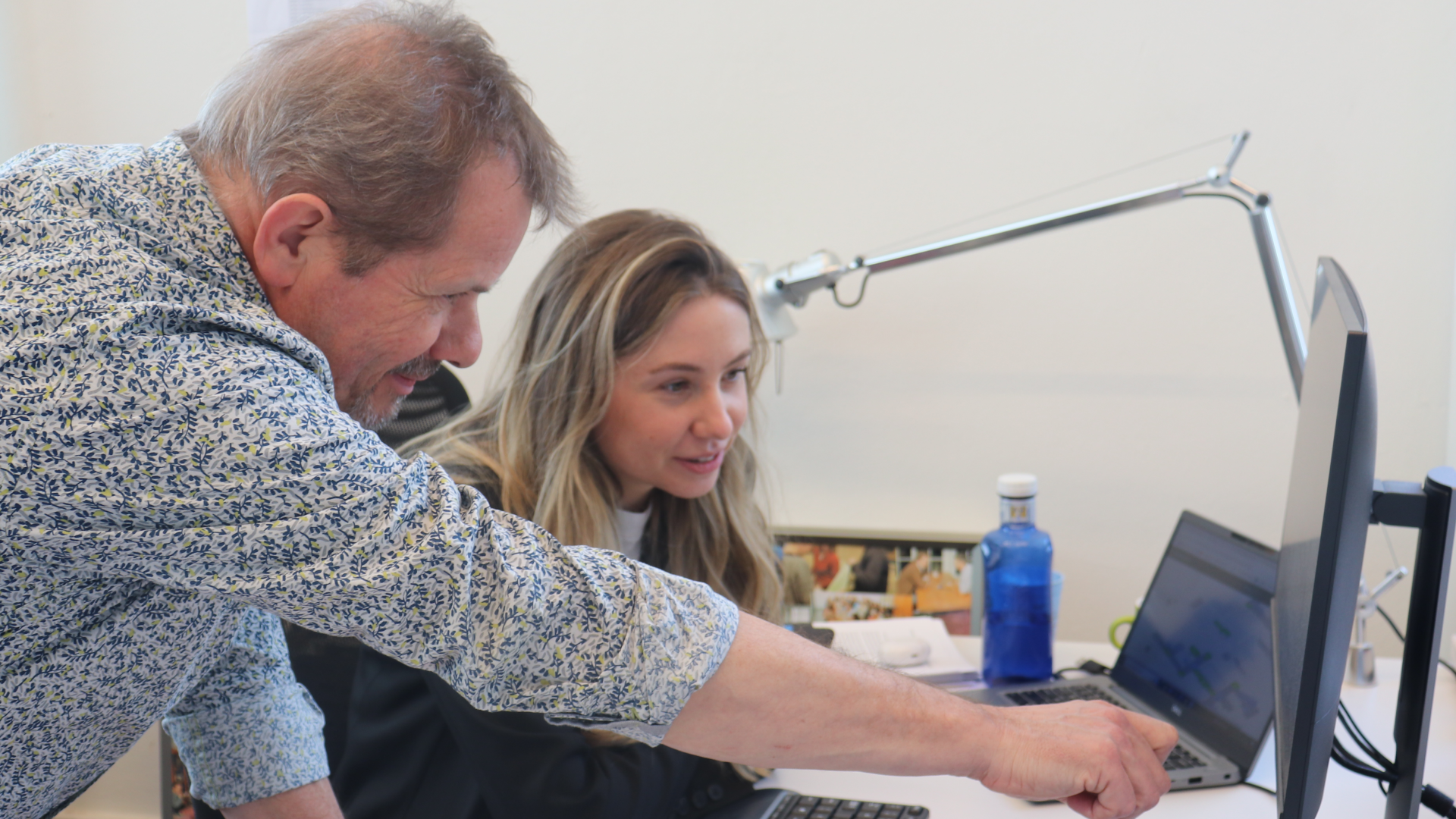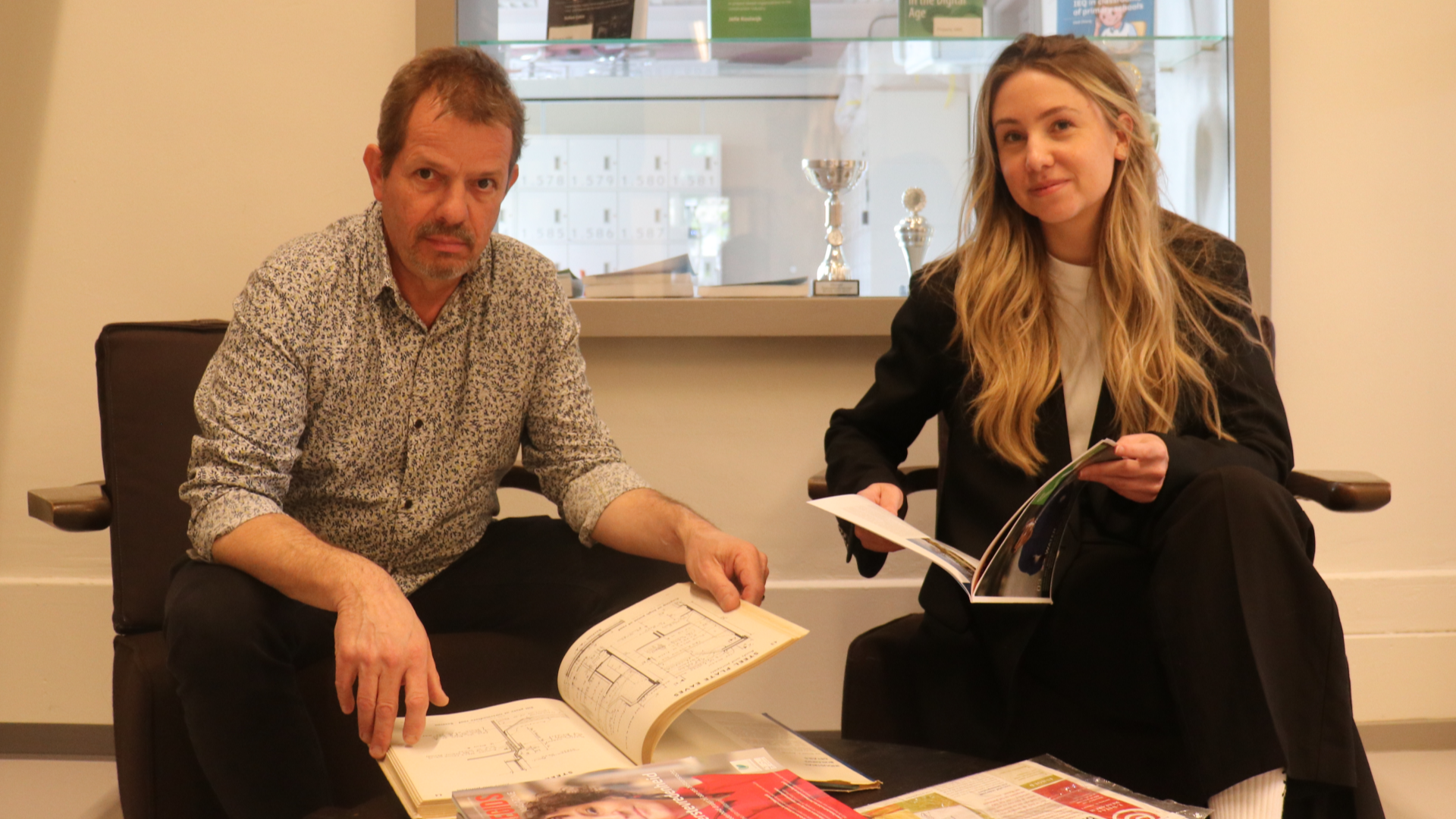Lessons from past and present Dutch housing crises
The Dutch Constitution states: 'It shall be the concern of the authorities to provide sufficient living accommodation.' Rightly so, believes Dr. Harry Boumeester: "Housing is a central concern." Yet housing crises remain a recurring phenomenon. Harry studies the housing market together with PhD candidate Rosa van der Drift. What can the past teach us? And what makes the present crisis different?
Team Harry and Rosa keeps a watchful eye on the Dutch housing market. Their office in the department MBE receives a constant stream of reports from dozens of institutes and companies. Rosa processes the raw data into useful tables and figures. "What makes the housing market unique is that we can predict prices to a certain extent," she says. "According to economic theory, this seems impossible, because predictions affect behaviour. If we predict that prices will rise in the future, then everyone would start buying, so the price increase would happen right now. This paradox may not apply to property prices because of the high transaction costs. Think transfer tax, notary fees, and the price of an architectural survey."
Harry uses the processed information for writing three different quarterly reports. The most well-known is the Monitor Koopwoningmarkt (House Buyers' Market), which goes out to both the press and professionals. Harry also provides the 'new homes' monitor, for property developers, and the 'owner-occupier market indicator'. "The latter is for the Home Ownership Association and consultancies, but also for my own research." You could say that Harry and Rosa have a bird's eye view of the housing market. In this article, they grant us some perspective on our current trouble.

From emancipation to neoliberalism
Harry has been studying the housing market since his PhD: an analysis of the housing crises of the '70s and '90s. Both decades saw rising house prices followed by a sudden drop. "In short, both were the result of increasing purchasing power. In the '70s, the entire economy grew, and housing prices grew with it. When the economy stagnated and interest rates rose sharply, many homeowners ran into payment problems and were forced to sell." In the '90s, growth in purchasing power was driven more by married women entering the labour market. Rosa: "Research often shows a correlation between regional house prices and percentage of women in gainful employment." The subsequent decline was primarily due to market stabilisation, so thankfully fewer forced home sales than in the previous crisis.
Around the year 2000, we see the prices rising and falling again. However, Harry argues that we are dealing with a very different situation. "During the neoliberal '90s, politicians tried to leave as much as possible to market forces. That led to rising house prices for everyone, making it increasingly difficult for families with lower incomes to buy a house." The trend was only halted in 2001. Harry: "The Middle Eastern crisis dealt a blow to consumer confidence, causing house prices to level off." Rosa: "And the 2008 financial crisis caused the market to collapse." Painful for the economy, but it did enable more households to once again purchase a home.

What makes today different
Today, then, we are struggling with rising house prices for the fourth time in half a century. Superficially, the situation looks like 2000. The government pulls back, market forces take effect, and soon households with lower incomes cannot compete. But there are two major differences. First, demographic change. "The baby boomers are now coming of age, but we eliminated nursing homes to cut costs," says Harry. "So demand for housing is increasing while construction is slowing down." Which brings us to the second difference: "We are now about 400,000 homes short in the Netherlands. That is the largest imbalance since World War II."
Rosa: "Theoretically, prices are determined by supply and demand, but this does not always hold true for owner-occupied houses. In fact, their price depends more on how much money the potential buyer can borrow." For instance, prices fell in 2022 while the housing shortage remained. That's because during that period, interest rates rose. This led to higher mortgage costs, hence less borrowing capacity, and hence lower prices. But cutting prices that way is not going to help most house seekers. Rosa: "An average existing home currently costs around €436,000, a new one as much as €502,000. This is despite our monitor showing that a typical two-earner family can only borrow €184,000."

Waiting is no longer an option
The key question is: what to do now? In terms of loss of confidence in the economy, the invasion of Ukraine is the current equivalent of the 2001 crisis. And indeed, it temporarily slowed the rise in house prices. But the housing shortage remained, so market forces won and the rise continued. Harry has little faith in the market's ability to tackle this problem on its own: "The housing market will always lag behind the facts." Rosa explains: "You might think that construction becomes more attractive when house prices are high, but we don't see that reflected in the data. In our opinion, this is partly due to strict requirements on the Dutch construction sector. There are good reasons for those requirements, but at the moment they hinder possible solutions."
Both believe it is now the government's turn, for instance by designating sites for new housing and encouraging construction. Harry: "In the past, we mainly built expensive luxury homes. Affluent families would move in, freeing up their houses for resale." Rosa: "But with the current focus on building 'cheap' housing, such chains of selling and purchasing no longer get going. Meanwhile, our research shows that many starters cannot borrow enough to buy any newly built property." Harry concludes, "We need to once again encourage these chains. By additionally building expensive housing, and by providing suitable alternatives for the elderly. And the government must take the lead, otherwise we will continue on our current trajectory."
Profiling the team
Harry: "I have always been interested in understanding and helping people. In high school I was already doing social work, I was a volunteer at the handball club until last year. Even now, I'm still in an action committee for local construction." He studied Sociology, with a thesis on the safety and burglary susceptibility of car parks. He then joined the Wetenschapswinkel (Science Shop), with one of the more memorable projects being a study on desertion in the Belgian army. In 1992, he joined research institute OTB, funded by commissions from industry. "But I took on all kinds of roles in the meantime, such as coordinator of a postgraduate course, confidant for PhD students, and lecturer at the faculties of TPM and ABE."
Rosa: "My core values are to remain apolitical and objective. Above all, I want to properly inform people." She studied monetary economics at the UvA and then started working at the Central Planning Bureau. "I focused on the housing market, such as opportunity-based housing policy. After years of learning about abstract banking issues, it was a relief to finally study a tangible subject! And besides, it's all-encompassing: everyone needs housing. I am currently in my fourth year of a six-year PhD track, focusing on explaining and predicting house prices." Rosa occasionally writes pieces for housing professionals and policymakers, and teaches academic skills within our faculty.
Published: May 2024
More information
Harry and Rosa are part of the Expertisecentrum Woningwaarde (Housing Value Expertise Centre), a collaborative initiative of the MBE department and CBS. Read their Monitor Koopwoningmarkt on the website.

Dr. Harry Boumeester

